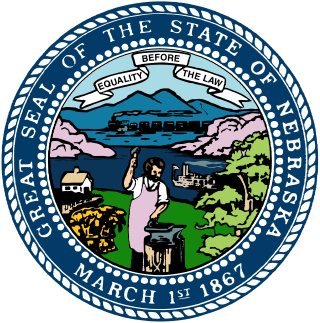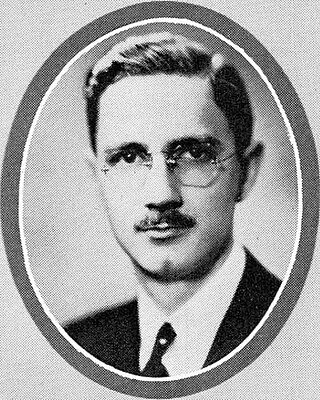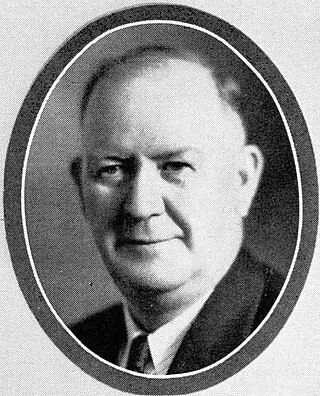
The 1998 Nebraska gubernatorial election was held on November 3, 1998. Term limits prevented incumbent Governor Ben Nelson, a Democrat, from seeking a third term in office. Republican nominee Mike Johanns, Mayor of Lincoln, defeated Democratic nominee, attorney Bill Hoppner. As of 2024, this was the last gubernatorial election in Nebraska in which the margin of victory was within single digits. Johanns later served Nebraska in the United States Senate with Nelson from 2009 to 2013.

William Edward Johnson served as the 22nd lieutenant governor of Nebraska, from 1939 to 1943. He was a Republican who initially served under Democratic governor Robert Leroy Cochran and later under governor Dwight Griswold, who was also a Republican. He was born in and died in Omaha.

The 1986 Nebraska gubernatorial election was held on November 4, 1986, and featured state Treasurer Kay Orr, a Republican, defeating Democratic nominee, former Mayor of Lincoln Helen Boosalis. Incumbent Democratic governor Bob Kerrey did not seek a second term.

The 1982 Nebraska gubernatorial election was held on November 2, 1982, and featured businessman Bob Kerrey, a Democrat, narrowly defeating incumbent Republican governor Charles Thone.

The 1978 Nebraska gubernatorial election was held on November 7, 1978, and featured U.S. Representative Charles Thone, a Republican, defeating Democratic nominee, Lieutenant Governor Gerald T. Whelan. Incumbent Governor J. James Exon, a Democrat, was barred from seeking a third term. Exon was elected to the U.S. Senate that same day.

The 1974 Nebraska gubernatorial election was held on November 5, 1974, and featured incumbent Governor James Exon, a Democrat, defeating Republican nominee, state Senator Richard D. Marvel. Independent state Senator Ernie Chambers also captured 5% of the vote as a write-in candidate. This was the first gubernatorial election in Nebraska in which the nominees for Governor and Lieutenant Governor ran as a single ticket in the general election, though they were chosen in separate primary elections.

The 1954 Nebraska gubernatorial election was held on November 2, 1954, and featured Mayor of Lincoln Victor E. Anderson, a Republican, defeating Democratic nominee, attorney William Ritchie.

The 1950 Nebraska gubernatorial election was held on November 7, 1950, and featured incumbent Governor Val Peterson, a Republican, defeating Democratic nominee, former state Senator Walter R. Raecke, to win a third and final two-year term in office.

The 1940 Nebraska gubernatorial election was held on November 5, 1940, and featured newspaper publisher and former state legislator Dwight Griswold, a Republican, defeating Democratic nominee, former U.S. Representative Terry Carpenter. Griswold became the first Republican to win the governorship since 1928.

The 1938 Nebraska gubernatorial election was held on November 8, 1938, and featured incumbent Governor Robert L. Cochran, a Democrat, defeating Republican nominee, Speaker of the state legislature Charles J. Warner, as well as former Democratic Governor Charles W. Bryan, who ran as an Independent, to win a third and final two-year term in office.

The 1934 Nebraska gubernatorial election was held on November 6, 1934, and featured state engineer Robert L. Cochran, a Democrat, defeating Republican nominee, newspaper publisher and former state legislator Dwight Griswold.

The 1920 Nebraska gubernatorial election was held on November 2, 1920, and featured incumbent Governor Samuel R. McKelvie, a Republican, defeating Democratic nominee, former Governor John H. Morehead, and progressive-backed independent candidate, York Mayor Arthur G. Wray, to win a second and final two-year term in office.

The 1900 Nebraska gubernatorial election was held on November 6, 1900.

The 1964 Nebraska lieutenant gubernatorial election was held on November 3, 1964, and featured 31-year-old Philip C. Sorensen, a Democrat, defeating Republican nominee Charles Thone. Incumbent lieutenant governor Dwight W. Burney decided to run for Governor of Nebraska and thus did not run for reelection as lieutenant governor.

The 1956 Nebraska lieutenant gubernatorial election was held on November 6, 1956, and featured Speaker of the Nebraska Legislature Dwight W. Burney, a Republican, defeating Democratic nominee Frank B. Morrison who had been chosen to replace original Democratic nominee Stanley D. Long who had died during the campaign.

The 1946 Nebraska lieutenant gubernatorial election was held on November 5, 1946. Incumbent Nebraska Lieutenant Governor Roy W. Johnson lost to Robert B. Crosby in the Republican primaries after the Nebraska Republican Pre-Primary Convention refused to endorse him for reelection. Thus, the general election featured Robert B. Crosby as the Republican nominee who defeated Democratic nominee Robert J. Swanson.

The 1942 Nebraska lieutenant gubernatorial election was held on November 3, 1942, and featured Roy W. Johnson, the Republican nominee, defeating Democratic nominee Harry P. Conklin. The incumbent lieutenant governor, William E. Johnson, decided not to seek reelection in order to run for United States House of Representatives in Nebraska's First District in 1942.

The 1938 Nebraska lieutenant gubernatorial elections were both held on November 8, 1938. Incumbent Nebraska Lieutenant Governor Walter H. Jurgensen was convicted of a felony in March 1938 and barred from running for a fourth term as lieutenant governor in June, 1938, leaving the 1938 lieutenant gubernatorial race wide open. The vacancy caused by his removal from office brought about two elections for lieutenant governor in 1938: the regular election which always happened biennially and a special election to fill the vacancy.

The 1934 Nebraska lieutenant gubernatorial election was held on November 6, 1934, and featured incumbent Nebraska Lieutenant Governor Walter H. Jurgensen, a Democrat, defeating Republican nominee Charles W. Johnson.

The 1910 Nebraska lieutenant gubernatorial election was held on November 8, 1910, and featured incumbent Nebraska Lieutenant Governor Melville R. Hopewell, a Republican, defeating Democratic nominee Ralph A. Clark as well as Socialist Party nominee George L. Slutter and Prohibition Party nominee Samuel Lichty.









